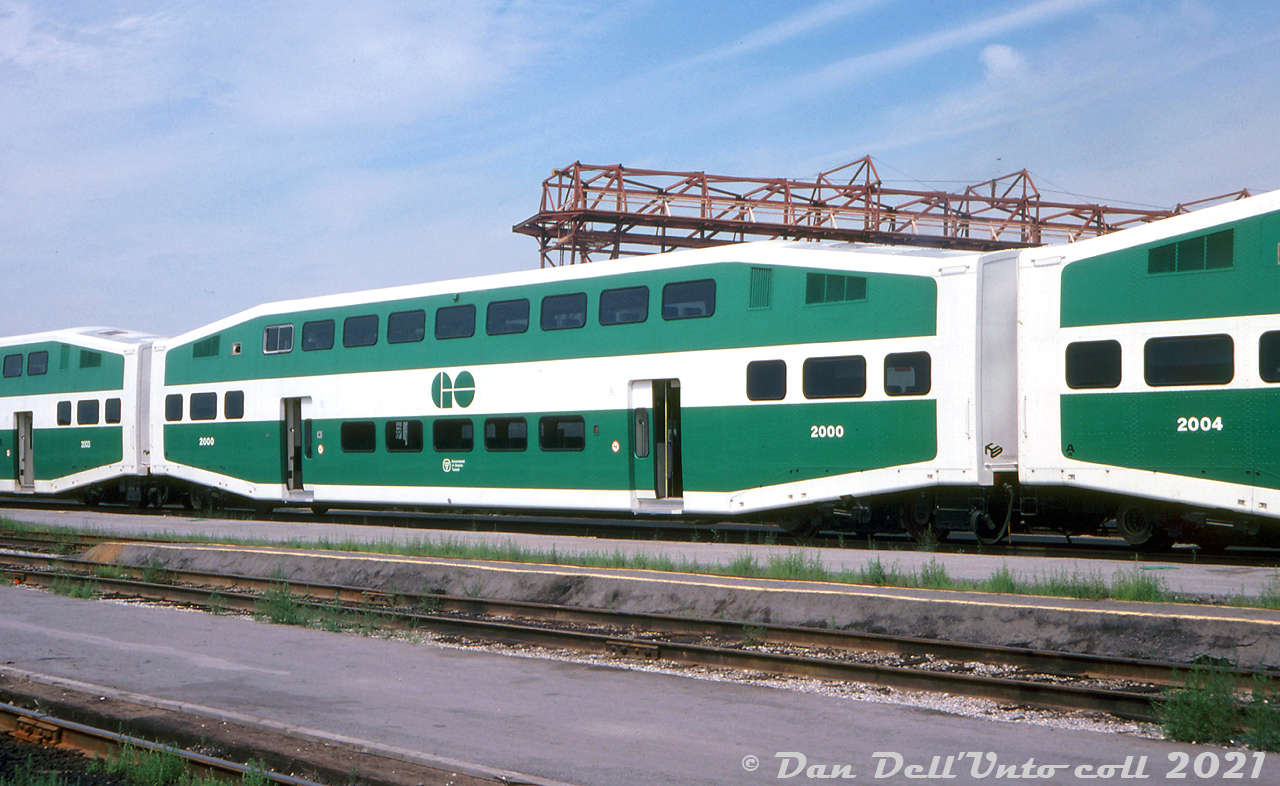|
Caption: The big kahuna, the original, numero uno: the first car. GO Transit 2000, the first Bilevel commuter car built, sits in Willowbrook Yard adjacent to the canopy (that was under construction at the time). Sister cars 2003 and 2004 are coupled at either end, all part of the same original bilevel order that was less than a year old at the time. Note the neat stylized "HS" Hawker Siddeley Canada block logos on the ends of the cars.
Looking for a higher-capacity alternative to its single level cars, and faced with the decision of running longer trains (and adjusting infrastructure to match) or higher capacity cars, in the 1970's GO Transit experimented with a few different commuter car designs, including borrowing both the C&NW gallery cars, and the CP ones built by Canadian Vickers. Not satisfied with the gallery car design, GO worked with Hawker Siddeley to make their own double deck commuter car design, dubbed the "Bilevel" commuter car, with two full levels in the middle and intermediate levels at each end, and two sets of doors to improve passenger flow.
The initial 1977 order was for 80 coach cars (2000-2079), and over four decades later GO has amassed a fleet of over 900 bilevels, including most of the originals. Subsequent orders included cab cars, and "accessible" cars with lower door controls (the initial conductors controls were located by the silver-framed upper sliding windows) and wheelchair ramps. The design changed hands over time, being first built by Hawker Siddeley Canada, then UTDC/Can-Car, Bombardier, and today Alstom Transport (all in the old Can-Car Thunder Bay, Ontario plant). Other commuter agencies also embraced the bilevel over time, and in recent years the design has had an upgrade with crumple zones to improve crash-worthiness, and a new cab car end design.
GO 2000 was one of 16 cars sold to Texas commuter startup Trinity Rail Express in 1997 (along with F59PH's 565-568) due to a mid-90's ridership decline, and became TRWX car 1050. The lowest-numbered bilevel on GO's roster today is 2002.
Original photographer unknown, Dan Dell'Unto collection slide.
|



Hi Dan. I am curious about three other people that were transit people. Harold Glover,Dave Morgan and Dave Smith. Dave Smith has been dead for a good number of years.
Hi Bruce, I’m not all that familiar with those three, but have heard of Dave Morgan and seen some of his transit shots.